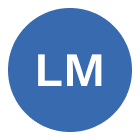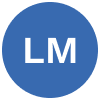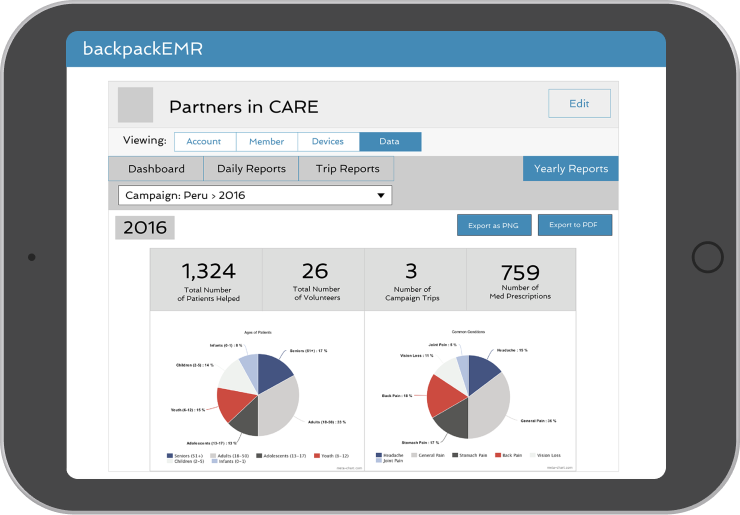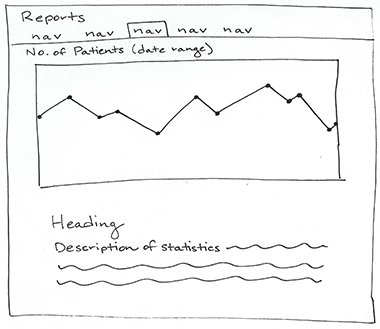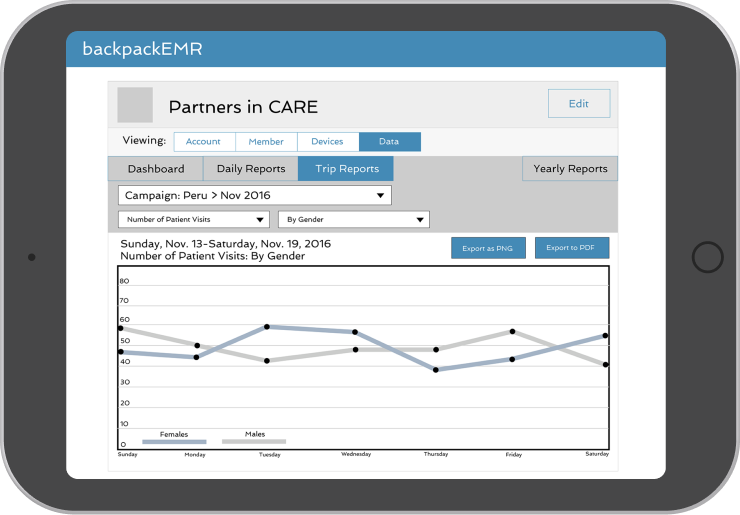
Project Spotlight: UX Design & Research
BackpackEMR
Electronic Medical Record software for use in remote locations
Project Overview
There are millions of people around the world whose healthcare needs go unmet every day. Especially in areas hit the hardest by poverty, rural communities feel the biggest impact from a lack of medical services. Natural disasters and other similar emergencies also provide challenging situations for healthcare delivery across the world. BackpackEMR provides an electronic medical records (EMR) system that can be utilized in remote areas, without internet access or even consistent electricity access. The final product for this week-long project was a set of wireframe designs aimed at pushing data functionality and reporting further for the BackpackEMR system.
The BackpackEMR system is developed by the Public Benefit Company, Binary Bridge. The mission of this company, and the purpose of this software, is to increase access to medical services in underserved areas around the world. Visit the BackpackEMR website.
Client: BackpackEMR & Binary Bridge
Prime Digital Academy provides educational opportunities in the software engineering and user experience design fields in the Twin Cities metropolitan area. Students complete rigorous, intensive programs to help prepare them for work transforming software and other digital experiences. Visit the Prime Digital Academy website.
Project Sponsor: Prime Digital Academy

There is a “lack of health workers in the world’s rural areas. Although half of the world’s population lives in them, only 23 percent of the global health workforce is deployed to rural areas.”
Source: UN International Labour Organization, News, More than half of the global rural population excluded from health care
Mobile EMR Application Competitive Research
Important introductory information about the purpose, goals, and features of BackpackEMR was shared to help us get a jump on our research about this application. We also examined features for competitors to BackpackEMR including the Timmy Global Health, HospitalRun, OpenMRS, and NotesFirs+ applications and systems. This helped us get a well-rounded basic picture of how BackpackEMR works and how competitors describe their digital EMR products as well.
Digging into the Journey for Remote Healthcare Workers
It made sense for this project to create a journey map for a remote medical worker and site admin for the BackpackEMR system. Looking through this lens provided a closer look at a probable experience for a healthcare worker in the field and helped to determine possible areas of focus for wireframe creation.
According to a United Nations International Labour Organization (ILO) report, 56 percent of people worldwide, and up to 83 percent of inhabitants in Africa, remain without essential, consistent, and reliable healthcare access. The impact is felt most strongly by countries facing high levels of poverty.
Source: UN International Labour Organization, Sustainable Development Goals, New UN report finds bulk of world’s rural populations excluded from healthcare access, 2015
Sketching the Possibilities
For this week-long project, the focus was on creating mid-fidelity design ideas and possibilities related to data and reporting for the BackpackEMR system. Sketching was an important step in helping us get started with some possible layouts.
Mid-Fidelity Wireframes
Main Dashboard
With the focus squarely on designing ways to incorporate data and metrics reporting into the existing design of the BackpackEMR system, one important piece of the puzzle was to craft a possible main dashboard. This dashboard was meant to act as an overall organizational structure and provide users with an easy way to access various kinds of data and information related to remote medical campaigns.
Trip Reports
Campaigns for healthcare non-profits often consist of several trips to one remote location over an extended period of time. For each of these individual trips, it’s often vital to capture metrics that provide a picture of the care provided during the total time spent in a particular country or other designated geographic areas.
Daily Reports
With Daily Reports in BackpackEMR, you would be able to analyze and compare day-to-day care across a number of categories, possibly including patient visits by gender, age, etc. This type of data could be important when determining medical supply needs and care provider numbers for each day of a particular trip.
Yearly Reports
Yearly Reports could consolidate data and display it across the weeks and months of a single year. These types of measurements might be useful for end-of-year meetings and presentations as well as required non-profit, organizational, or company-based information, metrics, and data reporting.
Notifications
The final focus area for this condensed project, related closely to data and metrics, was the design of possible notification functionality that could be built into BackpackEMR. The thinking for this feature was that important patient notes from a trip or campaign could be forwarded to external medical partners who also work in the same remote location as a particular organization.
The BackpackEMR project was a short but intense experience with a focus on a customer journey map and Kano analysis as early research and with mid-fidelity wireframes as the final product. Key takeaways for me included that collaboration with developers is, of course, vital to better estimation for feature completion. Also, though the project was brief, a lot can be accomplished within tight deadlines when goals are kept short and concise.
Lessons Learned
With more time on the BackpackEMR project, it would have been important to push to create higher-fidelity designs and also to show important interactive elements and functionality through prototyping.
